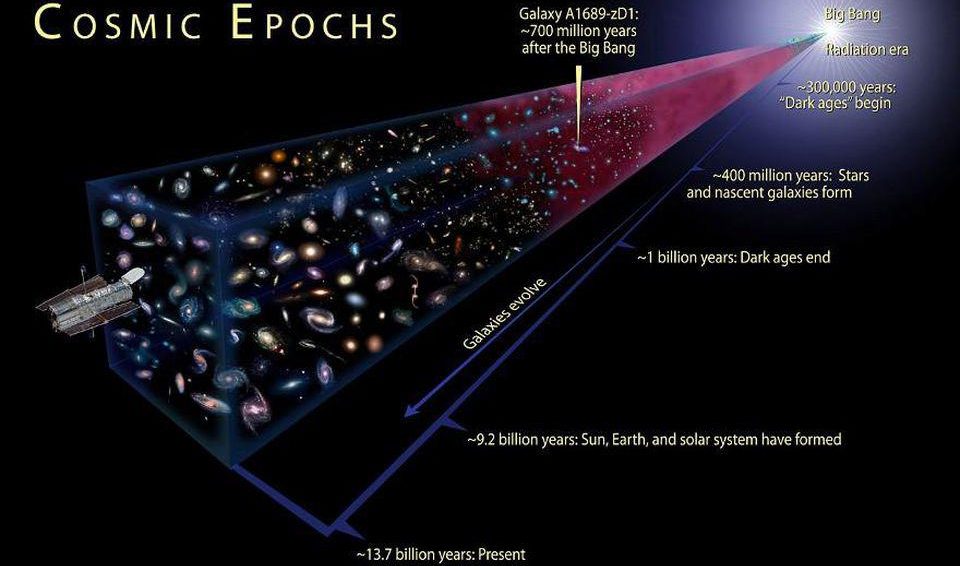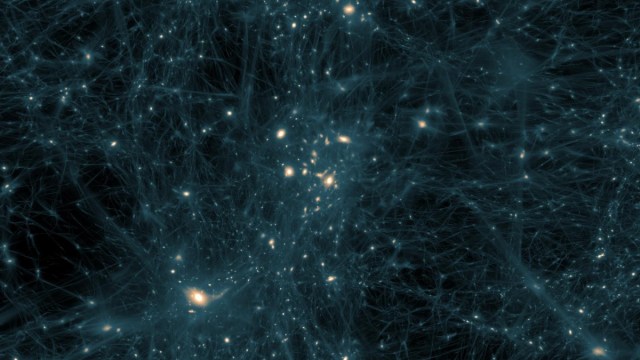Hubble Shatters The Cosmic Distance Record
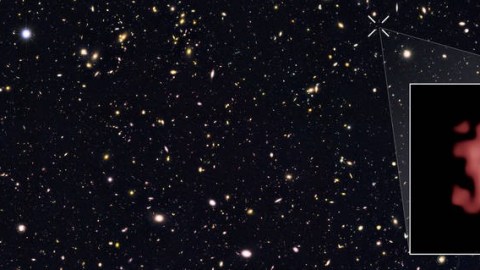
The new “most distant galaxy” is a shocker!
“Our spectroscopic observations reveal the galaxy to be even farther away than we had originally thought, right at the distance limit of what Hubble can observe.” –Gabriel Bremmer
Thanks to an incredible combination of luck, technology and human ingenuity, the Hubble Space Telescope has identified, measured and confirmed a galaxy farther away in space — and closer to the Big Bang — than ever before. Because the Universe is expanding, and the fabric of space in between galaxies expands as time goes on, the more distant a galaxy actually is, the more its emitted light gets stretched (or redshifted) before it reaches our eyes. Previously, the Universe’s most distant galaxy was known as EGS8p7, whose light was redshifted by an extra factor of 8.63 before it reached our eyes, telling us that it must have come from 13.24 billion years ago: when the Universe was just 573 million years old, or only 4% of its current age. But that record has been shattered, announced an international team of scientists using the Hubble Space Telescope.
The newest record-holder has had its light redshifted by a whopping factor of11.1, meaning the light is even older: it was emitted 13.40 billion years ago, when the Universe was only 407 million years old, or closer in time to the Big Bang than any other galaxy ever seen before. “We’ve taken a major step back in time, beyond what we’d ever expected to be able to do with Hubble. We see GN-z11 at a time when the universe was only three percent of its current age,” announced Pascal Oesch, the principal investigator of this project. You have to be extremely not just skilled, but also extremely lucky to see a galaxy this far back in time using the Hubble Space Telescope.
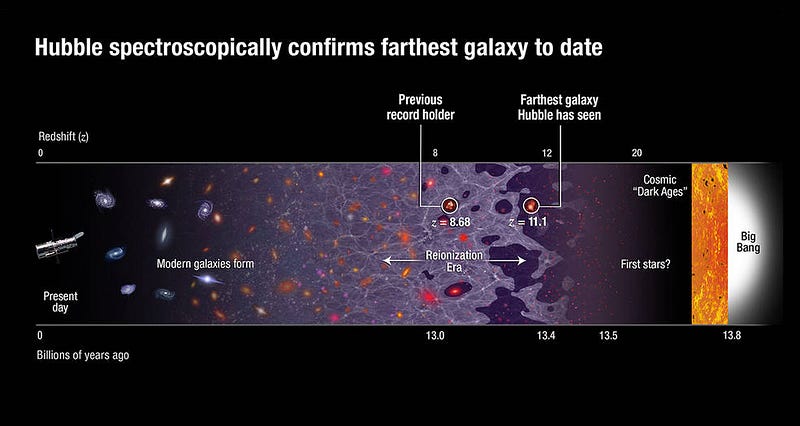
Image credits: NASA, ESA, and A. Feild (STScI).
The skill part is knowing that only the brightest galaxies at these great distances will be visible, since the apparent brightness falls off as the distance-to-the-source squared. The brightest light generated comes from the hottest, most massive stars, which not only predominantly emit ultraviolet light, but which ionize hydrogen atoms, causing the brightest and most powerful transition of all in a hydrogen atom: the Lyman-α line, which comes at a wavelength of just 121.567 nanometers, well out of the visible-light range of ~400 to 700 nanometers. As you look farther and farther away, the redshift takes effect, meaning that this line gets shifted all the way through the visible light and into the infrared: to a new wavelength of 121.567 × (1 + 11.1), where 11.1 is the redshift, or 1471 nanometers. Hubble is equipped with a spectrograph, meaning it can break up the light into the individual wavelengths, and the longest wavelength it’s equipped to measure — which was a new upgrade performed during its final servicing mission — goes all the way out to 1,600 nanometers! According to scientist Pieter van Dokkum, an investigator on the study:
“This is an extraordinary accomplishment for Hubble. It managed to beat all the previous distance records held for years by much larger ground-based telescopes. This new record will likely stand until the launch of the James Webb Space Telescope.”
But it also took a fair amount of luck, too! Most of the Universe, at those great distances, is full of neutral matter, or gas that has not yet been ionized.
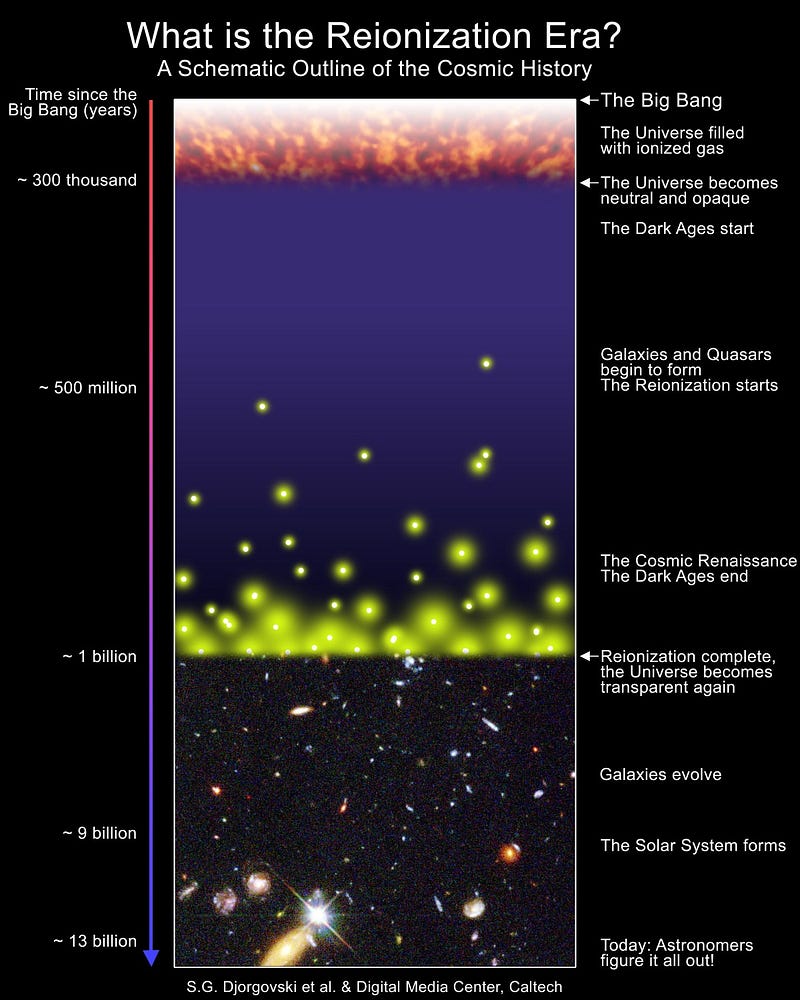
In order for the Universe to become transparent to the ultraviolet-and-visible wavelengths of light, which is what this light was back when it was traveling through the very distant parts of the Universe, it needs to be ionized, as neutral atoms will block the visible light the same way the dust in our galaxy obscures our view of the galactic center from Earth. But it takes generations of stars, emitting lots of ultraviolet radiation, in order for this to happen! It’s only by a stroke of luck that this galaxy — at such great distances and redshifts — happens to live in a region where the vast majority of the matter along the line-of-sight actually has undergone all that star formation, and is clear-and-ionized when we look that way.
The next frontier in astronomy will be the James Webb Space Telescope, which can reach back — in visible, near-infrared and mid-infrared wavelengths — to probe these galaxies at these great distances-and-redshifts even where the Universe hasn’t been reionized yet. This new record will quite possibly stand until then, as this level of serendipity isn’t likely to occur again. This galaxy is much smaller than the Milky Way, but still boasts over one billion stars, including a disproportionally large number of hot, bright, young blue stars. “It’s amazing that a galaxy so massive existed only 200 million to 300 million years after the very first stars started to form. It takes really fast growth, producing stars at a huge rate, to have formed a galaxy that is a billion solar masses so soon,” says scientist Garth Illingsworth, also involved with the study. “This new discovery shows that the Webb telescope will surely find many such young galaxies reaching back to when the first galaxies were forming,” he added.
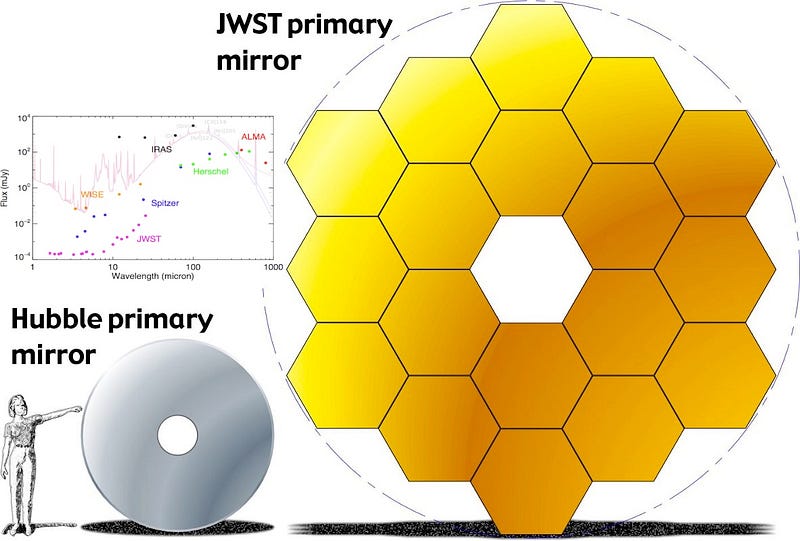
In theory, the earliest galaxies should come into existence at a redshift of 15-to-20, with perhaps a scant few forming even earlier. For reference, here’s what a galaxy’s redshift, light-travel-time, formation time after the big bang, and distance from us today would look like:

This is an amazing discovery and an amazing time to be alive, but we aren’t done yet. We’re reaching farther and farther back towards the Big Bang, but we’ve yet to find the limit of where the first stars and the first galaxies truly are. As our reach extends backwards ever farther as our technology and techniques improve, perhaps we’ll truly find the very first “light” in the Universe in the coming decade, and understand a little deeper the story of where we all come from.
This post first appeared at Forbes. Leave your comments on our forum, check out our first book: Beyond The Galaxy, and support our Patreon campaign!




